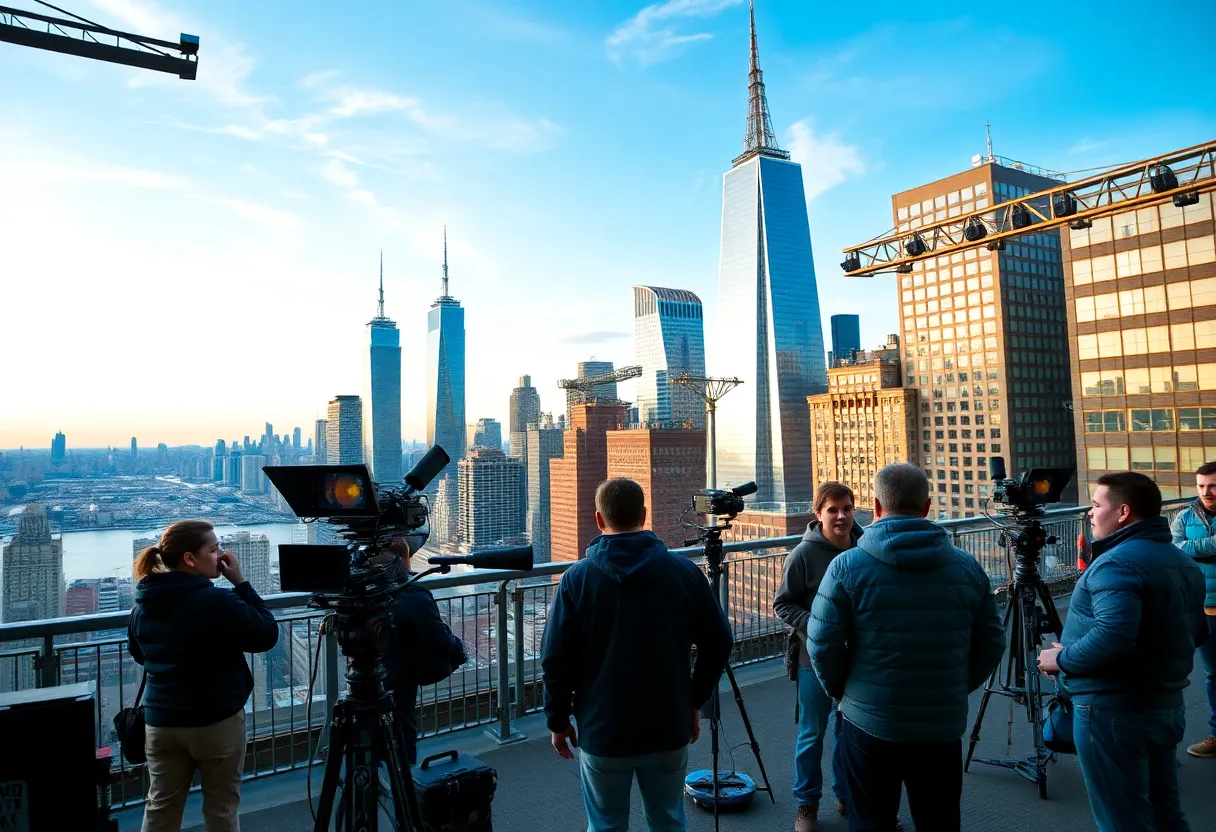News Summary
Governor Kathy Hochul has approved a new state budget that significantly increases incentives for film and television production in New York. The funding rises to $700 million, benefiting independent projects and introducing new programs to attract larger productions. Changes include increased tax credits, relaxed eligibility criteria, and added support for local music scoring, aimed at enhancing the state’s competitive standing in the industry amidst growing competition from California.
New York – Governor Kathy Hochul has signed the newly approved New York State budget that includes substantial expansions to incentives for film and television production. The updated budget, which had faced delays, introduces a more competitive financial landscape for media productions within New York, especially in light of growing competition from states like California and national policies proposed by former President Donald Trump.
The film and television production incentives included in the budget are set to remain in place until 2036. They were enacted through a legislative process that maintained consistency in funding without significant cuts. Crucially, the annual allocation for these incentives has increased by $100 million, bringing the total to $700 million and specifically benefiting independent projects. This funding is earmarked particularly for productions that are less than 51% owned by publicly traded companies, thereby fostering the independent production sector.
Among the notable changes, independent projects will receive $100 million in total allocation, divided into $20 million for projects with budgets under $10 million and $80 million for those exceeding that threshold. It is important to note that once the independent project fund is exhausted, no further applications will be accepted for the current year. Additionally, independent production companies are restricted to submitting a maximum of two applications annually.
The budget also addresses the needs of larger productions through the implementation of the Production Plus Program. This program provides added tax credits for productions that achieve combined total qualified production costs of $100 million or more, thereby enhancing the appeal for significant investments in New York State.
Increased incentives include the elimination of the $500,000 cap on Above-the-Line (ATL) labor costs, allowing for greater financial flexibility. However, these ATL costs can only represent up to 40% of the other qualified below-the-line and vendor expenses. Other revisions significantly ease the qualification process for Post-Only Credits, permitting production companies to qualify with either spending over 75% of the post-production budget in New York or meeting a $1 million expenditure in the state.
Furthermore, eligibility criteria for VFX/Animation-only Credits have been relaxed, now requiring only 10% of the budget or $500,000 spent within New York, down from the prior thresholds of 20% or $3 million. For applications filed after January 1, 2025, productions will be able to claim their credits in the allocation year immediately, instead of the previously required three-year timeline for credits exceeding $5 million.
A new provision introduced in the budget allows for music scoring costs to be eligible for an additional 10% incentive, which is contingent on hiring at least five musicians in New York State. This initiative aims to bolster local employment opportunities within the music sector, linking the film industry directly to the community.
These changes have garnered considerable praise from industry stakeholders, with recognition of the economic impact potential as New York seeks to hold its competitive position in the film and television landscape. The Motion Picture Association has indicated that the expanded incentive program could serve as a pivotal economic driver for the state.
However, the enhanced funding and incentive structures come amid concerns over rising competition from other states, particularly California, which has proposals in motion to increase its own film incentives significantly. Early reports suggest that California intends to raise its annual cap from $330 million to $750 million, including plans to expand qualifying productions and enhance individual project credits from 20% to 35%.
As New York tries to adapt to these evolving market dynamics, it faces scrutiny regarding the overall economic return on its film incentives program. Recent state audits have indicated that the actual return on investment may be lower than previously reported figures, revealing mounting pressure on the effectiveness of such budget allocations.
Despite these challenges, the landscape for film and television production in New York remains vibrant as stakeholders closely monitor the developments and impacts of the newly implemented budget provisions.
Deeper Dive: News & Info About This Topic
- Hollywood Reporter
- Wikipedia: Film in New York
- Deadline
- Google Search: New York film tax incentives
- Variety
- Encyclopedia Britannica: Filmmaking
- Times Union
- Google Scholar: New York film incentives
- Daily Freeman
- Google News: New York film production incentives

Author: STAFF HERE NEW YORK WRITER
The NEW YORK STAFF WRITER represents the experienced team at HERENewYork.com, your go-to source for actionable local news and information in New York, the five boroughs, and beyond. Specializing in "news you can use," we cover essential topics like product reviews for personal and business needs, local business directories, politics, real estate trends, neighborhood insights, and state news affecting the area—with deep expertise drawn from years of dedicated reporting and strong community input, including local press releases and business updates. We deliver top reporting on high-value events such as New York Fashion Week, Macy's Thanksgiving Day Parade, and Tribeca Film Festival. Our coverage extends to key organizations like the Greater New York Chamber of Commerce and United Way of New York, plus leading businesses in finance and media that power the local economy such as JPMorgan Chase, Goldman Sachs, and Bloomberg. As part of the broader HERE network, including HEREBuffalo.com, we provide comprehensive, credible insights into New York's dynamic landscape.





